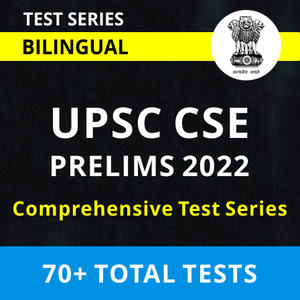Table of Contents
Corruption in India: Relevance
- GS 3: Role of external state and non-state actors in creating challenges to internal security.
What is corruption?
- Transparency International defines corruption as the abuse of entrusted power for private gain.
- According to 2nd ARC, Corruption= Monopoly+ Discretion-Accountability.
- Corruption is a complex social, political and economic phenomenon that affects all countries.
Corruption types
There are two parties in an act of corruption: Bribe giver and Bribe taker.
- Collusive corruption: Collusive corruption happens when bribe helps both the giver and taker to further their personal gains through illegal means. Collusive corruption is a serious threat to the nation.
- Coercive corruption: Coercive corruption exploits the downtrodden and disadvantaged community. It is called as an act of atrocity because here bribe giver is a victim of extortion.
Corruption impact
- Corruption erodes trust, weakens democracy, hampers economic development and further exacerbates inequality, poverty, social division and the environmental crisis.
- Corruption undermines democratic institutions, slows economic development and contributes to governmental instability.
- Corruption attacks the foundation of democratic institutions by distorting electoral processes, perverting the rule of law and creating bureaucratic quagmires whose only reason for existing is the soliciting of bribes.
- Economic development is stunted because foreign direct investment is discouraged and small businesses within the country often find it impossible to overcome the “start-up costs” required because of corruption.
Corruption causes
- Economic reason: High share of informal sector, high inequalities.
- Political reason: Criminalisation of politics, use of unaccounted money in elections, Crony capitalism.
- Administrative reasons: Politicisation of bureaucracy, colonial bureaucracy, failed administrative reforms, lack of public growth and low income of public servants, judicial failures, lack of effective grievance redressal mechanism.
- Social and ethical reasons: Increasing individualism and materialism, failure of education system to impact value-based education, social discrimination and exploitation.
India’s effort in the fight for corruption
- India has signed UN conventions against corruption adopted by UNGA in 2003.
- India has also signed ADB OECD Anti-Corruption Action Plan for Asia Pacific.
- Systemic improvements and reforms to provide transparent citizen-friendly services and reduce corruption.
- Disbursement of welfare benefits directly to the citizens under various schemes of the Government in a transparent manner through the Direct Benefit Transfer
- Implementation of E-tendering in public procurements.
- Introduction of e-Governance and simplification of procedure and systems.
- Introduction of Government procurement through the Government e- Marketplace (GeM).
- The Prevention of Corruption Act, 1988 has been amended on 26.07.2018. It clearly criminalizes the act of giving bribe and will help check big ticket corruption by creating a vicarious liability in respect of senior management of commercial organizations.
- Central Vigilance Commission (CVC), through various orders and circulars recommended adoption of Integrity Pact to all the organizations in major procurement activities and to ensure effective and expeditious investigation wherever any irregularity / misconduct is noticed.
- The institution of Lokpal has been operationalised by appointment of Chairperson and Members. Lokpal is statutorily mandated to directly receive and process complaints as regards alleged offences against public servants under the Prevention of Corruption Act,1988.
- Unit Area Scheme in Delhi, e-Cops in Punjab, e-Governance in AP- to decrease discretion and improve transparency.
Issues in India’s efforts towards removing corruption
- PCA don’t have a definition of corruption.
- Vohra committee revealed nexus between corporates, govt functionaries and politicians.
- Both systemic and systematic corruption in India thus leading to sansritization of corruption.
Solutions needed
2nd ARC has made the following recommendations to reduce corruption
- Collusive corruption should be made a special offence.
- Prior consent should not be necessary for prosecuting a public servant who has been caught red handed.
- NGO which receives substantial funding should be covered under PCA.
- Steps should be taken to implement Benami Transactions Act.
- Legislation should be proposed to protect whistle-blower according to Law Commission.
- Article 105(2) should be amended to provide that the immunity enjoyed by MP does not cover corrupt Acts.
- Article 311 should be repealed.
- CVC should work under the guidance of lokpal.
- Lokpal should be a three-member body.
- Citizen charter should be made effective by providing remedies if the services are not met.
- Ending monopoly of govt in large no. of services.
- Using IT like Gyandoot project in MP.
- Encourage integrity pacts.
- Integrity pacts: Agreement between public agencies involved in procurement of goods and services and the bidder for a public contract to the effect that the bidder will not pay any illegal gratification to secure the contract.
- Surprise inspections
- Online complaint tracking system in all large govt org.
- Fifth pay commission and NCRWC made recommendations regarding transfer industry.
Also Read:






 TSPSC Group 1 Question Paper 2024, Downl...
TSPSC Group 1 Question Paper 2024, Downl...
 TSPSC Group 1 Answer key 2024 Out, Downl...
TSPSC Group 1 Answer key 2024 Out, Downl...
 UPSC Prelims 2024 Question Paper, Downlo...
UPSC Prelims 2024 Question Paper, Downlo...
